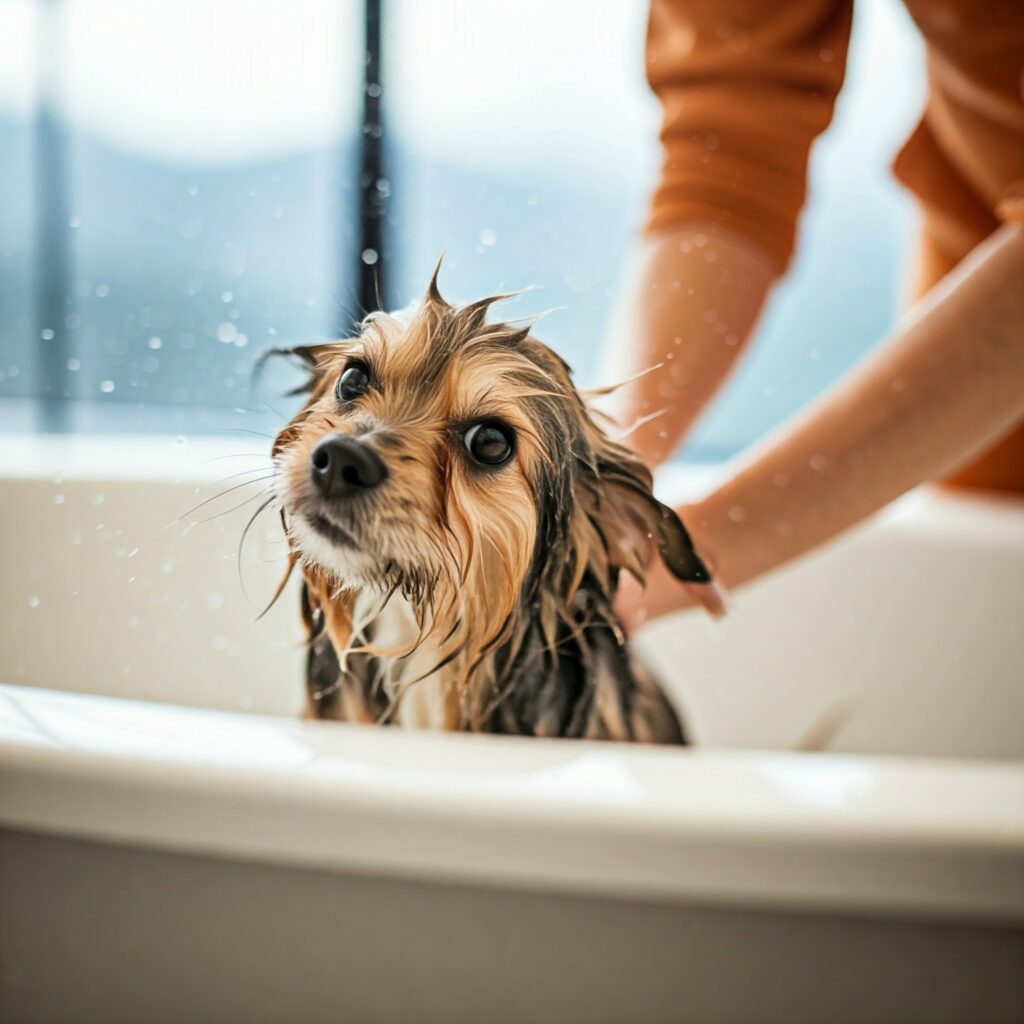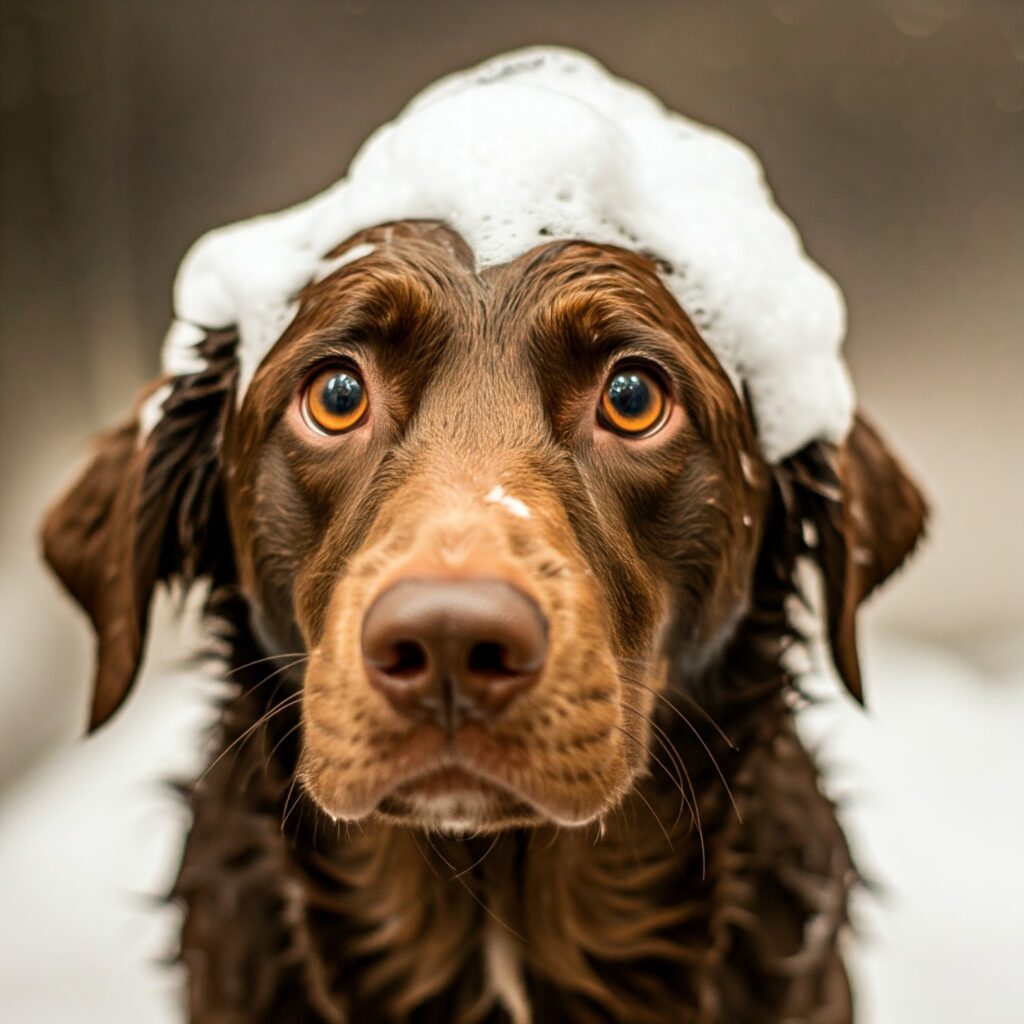Bathing your dog is an essential part of pet care, but the question of how often to bathe can be a bit perplexing. The frequency of baths can vary significantly based on several factors, including your dog’s breed, coat type, lifestyle, and individual skin needs. In this article, we will explore the various considerations that will help you determine the right bathing schedule for your furry friend.

The Importance of Bathing
Regular bathing is important for several reasons:
- Hygiene: Bathing helps remove dirt, debris, and odors from your dog’s coat and skin, promoting overall cleanliness.
- Skin Health: Proper bathing can help prevent skin issues, such as infections and allergies. However, over-bathing can strip natural oils, leading to dry skin.
- Parasite Control: Bathing can help remove fleas, ticks, and other parasites from your dog’s coat.
- Bonding Time: Bathing your dog can also be a great opportunity for bonding, allowing you to spend quality time together.
Factors Affecting Bathing Frequency
1. Breed and Coat Type
Different breeds have varying grooming needs:
- Short-Haired Breeds: Dogs like Beagles and Boxers may only need a bath every 2-3 months unless they get particularly dirty or start to smell. Their short coats don’t trap dirt and oils as much as longer coats.
- Long-Haired Breeds: Breeds such as Golden Retrievers or Shih Tzus typically require more frequent baths, usually every 4-6 weeks. Their long fur can trap dirt, debris, and odors, necessitating regular washing.
- Double-Coated Breeds: Dogs like Huskies and German Shepherds have a double coat that requires careful grooming. While they may not need frequent baths, brushing is essential to remove loose fur and prevent matting.
2. Lifestyle and Activity Level
A dog’s lifestyle plays a significant role in determining bathing frequency:
- Active Dogs: If your dog enjoys outdoor adventures, playing in mud, or swimming, they will likely need more frequent baths—potentially every 2-4 weeks.
- Indoor Dogs: Dogs that primarily stay indoors may only require baths every couple of months, as they are less exposed to dirt and debris.
- Special Activities: If your dog participates in sports or activities that expose them to water, dirt, or allergens, you may need to adjust their bathing schedule accordingly.
3. Skin and Health Conditions
Some dogs may have specific skin conditions that influence how often they should be bathed:
- Allergies: Dogs with allergies may benefit from more frequent bathing (every 1-2 weeks) using hypoallergenic shampoos to remove allergens from their skin.
- Flea or Tick Infestations: If your dog has had a flea or tick problem, a bath may be necessary to remove these pests and their eggs.
- Skin Conditions: Certain dermatological issues may require medicated baths as prescribed by your veterinarian. In these cases, follow your vet’s advice regarding frequency.
4. Age and Size
- Puppies: Puppies generally require fewer baths than adult dogs. Until they are fully vaccinated, limit baths to avoid stress and potential health risks. Once vaccinated, you can bathe them about once a month.
- Senior Dogs: Older dogs may have more sensitive skin, so consider bathing them less frequently. Pay attention to their needs and any changes in their coat or skin condition.
Signs That Your Dog Needs a Bath
While you can establish a routine based on the factors mentioned, your dog’s behavior and condition can also indicate when it’s time for a bath:
- Odor: If your dog begins to smell bad, it’s a clear sign that they need a bath. This can happen even if they haven’t been outside much.
- Visible Dirt or Mud: If your dog has been playing outside and is covered in dirt, a bath is likely necessary.
- Oily Coat: If your dog’s fur feels greasy or oily, it may be time for a wash.
- Scratching or Irritation: Excessive scratching or skin irritation may indicate that your dog needs a bath, especially if they have been exposed to allergens or irritants.
How to Bathe Your Dog
Once you determine it’s time for a bath, here are some steps to follow to ensure a positive bathing experience:
1. Gather Supplies
Before starting, gather everything you need, including:
- Dog shampoo (preferably formulated for dogs)
- Towels
- A brush (for pre-bath grooming)
- A non-slip mat (to keep your dog safe in the tub)
- A detachable showerhead or cup for rinsing
2. Brush Your Dog
Before bathing, brush your dog’s coat to remove tangles, loose hair, and debris. This step is especially important for long-haired breeds to prevent matting.
3. Choose the Right Location
Select a bathing location that is comfortable for both you and your dog. This could be a bathtub, a sink, or even outdoors if the weather permits. Ensure the area is safe and non-slip.
4. Use Lukewarm Water
Make sure to use lukewarm water, as hot water can irritate your dog’s skin. Ensure the water temperature is comfortable before you begin.
5. Apply Shampoo
Wet your dog’s coat thoroughly and apply a dog-specific shampoo. Be careful to avoid the eyes and ears. Massage the shampoo into their coat, creating a lather.
6. Rinse Thoroughly
Rinse your dog thoroughly to remove all shampoo. Leftover soap can irritate the skin and cause dryness.
7. Drying
After rinsing, gently towel dry your dog. If your dog is comfortable with it, you can use a low-heat blow dryer to help dry their coat, but be sure to keep it at a distance.
8. Post-Bath Grooming
After bathing, take a moment to brush your dog again. This helps remove any remaining loose hair and keeps their coat looking healthy.
Alternatives to Bathing
If you find that bathing your dog too frequently can strip their coat of natural oils, consider these alternatives:
- Waterless Shampoo: These products can help refresh your dog’s coat without the need for a full bath.
- Wipes: Dog-specific grooming wipes can help clean your dog’s paws and face between baths.
- Brushing: Regular brushing can help reduce dirt and debris buildup, which may allow you to extend the time between baths.
Conclusion
Determining how often to bathe your dog depends on a variety of factors, including breed, lifestyle, and health considerations. While some dogs may require frequent baths, others may only need a wash every few months. Always keep an eye on your dog’s coat and skin condition to decide when it’s time for a bath.
Ultimately, the goal is to maintain your dog’s hygiene and health while ensuring a positive experience during bath time. With the right approach and understanding, you can establish a bathing routine that keeps your furry friend clean, comfortable, and happy!






